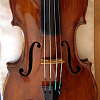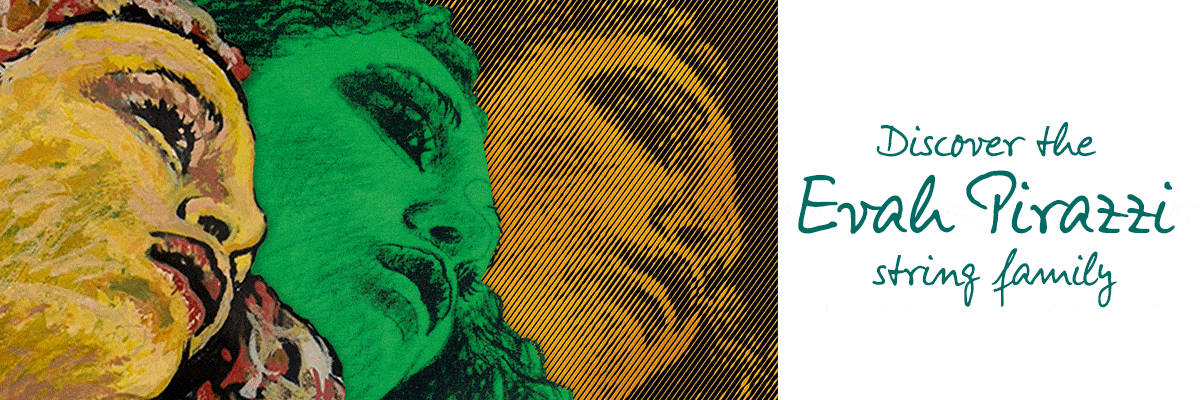
August 2011
V.com weekend vote: Have you ever had a performance canceled because of bad weather?
August 27, 2011 14:32
Hurricane Irene has undoubtedly caused some cancellations this weekend in the performing arts world, and that has inspired this week's vote: Have you ever had a performance, concert, master class, etc. canceled, due to bad weather? Have you had any canceled this weekend, due to Irene?
Most of my bad-weather stories occurred when I was in college one summer, playing in the Disney All-American College Orchestra, which had three performances per evening. The performances occurred outdoors, in Florida, where the sky can start heaving copious rain in the blink of an eye. Often, these cancellations would occur mid-way through the performance. We grew to understand that a simple gust of wind and one raindrop meant: Cover the instrument and run! Sometimes we simply spent the entire night in a breakroom, playing cards, waiting to see if the rain would stop.
In California, I can remember the ground swaying distinctly during the middle of an indoors concert with the Redlands Symphony, though no one was particularly fazed. "Feel the earthquake?" everyone asked each other after the concert, in the same way you would ask, "Did you have dinner yet?"
What are your weather-related stories?
V.com weekend vote: Melody, or harmony?
August 19, 2011 13:12
Are you more of a melody person, or more of a harmony person?
Of course it takes both to make good music, but I'd say that when it comes to playing a part, some people prefer to ride the melody wave while others prefer the harmony.
For me, this started when I was a child; I was always interested in finding someone who could carry a melody so I could sing harmony along with them. This proved rather difficult, as many people get flustered when someone departs from the melody. Ever try to break into harmony while singing "Happy Birthday" with musical Muggle friends? Perfect way to de-rail the entire proceedings!
So I have always loved playing harmony to someone else's melody. I also love pieces like the Bach Double, for which their are motives but not exactly melody. Not that I don't love playing melodies, I do. But when I'm humming in the car, it's usually the harmony.
How about you, to which part do you gravitate?
V.com weekend vote: Are you left-handed? (and happy Left-Handers Day!)
August 12, 2011 09:48
Happy Left-Handers Day! Certainly, this calls for a weekend poll!
There are an unusual prevalence of left-handed people in the arts, and this includes classical music. Some examples: Mozart, Beethoven, Schumann, Paganini, Prokofiev, Ravel, and more.
I happen to be left-handed as well. A number of people have asked me if I ever considered playing the violin with the bow in the left hand and fiddle in the right. It's a questioned that has always puzzled me, I always felt at an advantage, with all that work the left hand must do! Of course, I've had to work hard on BOTH hands, as we all do!
Are you left-handed? Do you know of any other violinists who are?
Happy left-hander's day!
V.com weekend vote: What kind of approach best helps your violin technique and motivates you to improve?
August 5, 2011 23:52
Summer took me to New York for a few days, where I visited long-time Violinist.com member Fan Tao, who is a researcher for the D'Addario Strings. I'm planning to write more about D'Addario's factory and how violin strings are made, but for this weekend's vote, I wanted to talk about something inspired by my conversation with Fan, who is a violinist himself and has deep knowledge and a fascinating perspective on many aspects of the violin.
He told me that his research on violin strings, and the physics of how the violin worked, did more to help his violin-playing than anything. For example, he was able to help a friend diagnose a problem she was having with her thumb by relating it to the physics of bow mechanics. This made me think about the different ways that violinists think about playing, relating it to their own experiences and ways of solving problems. Different people can describe and think about the same concepts in various ways, and looking at someone else's way of thinking can enriches our understanding of how to play. Here are some of the ways that people think about playing:
Understanding the physics of the instrument : Gaining an understanding of the mechanics of the instrument, in order to apply that knowledge to the music.
Understanding the musical goal : Sometimes a teacher or conductor can say, "make it sound sweet," and that means more to someone than "add vibrato, tilt your hand," etc. No doubt, they must figure out the mechanics of how to get there, but their focus on perfecting the expressive sound is what helps all those changes fall into place.
Understanding how the muscles/body work: This is more of a focus on how the body works, finding the right positions that allow for ease in playing. Finding that point of ease is what allows the musical ideas to fall into place.
No one approach is superior to the others, and I suspect people tend to have a combination of approaches over their time, learning the violin. I'm sure there are other approaches as well, and I would invite you to describe them. But my question to you is, which is your main approach, that best helps you to understand and improve?
More entries: July 2011
Violinist.com is made possible by...
Dimitri Musafia, Master Maker of Violin and Viola Cases
Johnson String Instrument/Carriage House Violins
Subscribe
Laurie's Books
Discover the best of Violinist.com in these collections of editor Laurie Niles' exclusive interviews.

Violinist.com Interviews Volume 1, with introduction by Hilary Hahn

Violinist.com Interviews Volume 2, with introduction by Rachel Barton Pine






